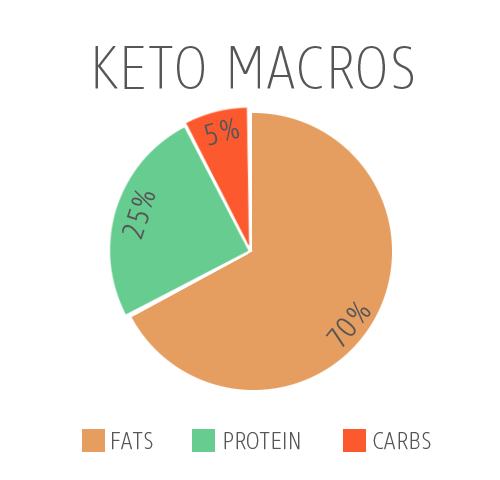To start a keto diet, you will want to plan ahead. That means having a viable diet plan ready and waiting. What you eat depends on how fast you want to get into a ketogenic state. The more restrictive you are on your carbohydrates (less than 15g per day), the faster you will enter ketosis.
You want to keep your carbohydrates limited, coming mostly from vegetables, nuts, and dairy. Don’t eat any refined carbohydrates such as wheat (bread, pasta, cereals), starch (potatoes, beans, legumes) or fruit. The small exceptions to this are avocado, star fruit, and berries which can be consumed in moderation.
Do Not Eat
- Grains – wheat, corn, rice, cereal, etc.
- Sugar – honey, agave, maple syrup, etc.
- Fruit – apples, bananas, oranges, etc.
- Tubers – potato, yams, etc.
Do Eat
- Meats – fish, beef, lamb, poultry, eggs, etc.
- Leafy Greens – spinach, kale, etc.
- Above ground vegetables – broccoli, cauliflower, etc.
- High Fat Dairy – hard cheeses, high fat cream, butter, etc.
- Nuts and seeds – macadamias, walnuts, sunflower seeds, etc.
- Avocado and berries – raspberries, blackberries, and other low glycemic impact berries
- Sweeteners – stevia, erythritol, monk fruit, and other low-carb sweeteners
- Other fats – coconut oil, high-fat salad dressing, saturated fats, etc.
Try to remember that keto is high in fat, moderate in protein, and very low in carbs. Your nutrient intake should be something around 70% fats, 25% protein, and 5% carbohydrate.
Typically, anywhere between 20-30g of net carbs is recommended for everyday dieting – but the lower you keep your carbohydrate intake and glucose levels, the better the overall results will be. If you’re doing keto for weight loss, it’s a good idea to keep track of both your total carbs and net carbs.
Protein should always be consumed as needed with fat filling in the remainder of the calories in your day.
You might be asking, “What’s a net carb?” It’s simple really! The net carbs are your total dietary carbohydrates, minus the total fiber. I recommend keeping total carbs below 35g and net carbs below 25g (ideally, below 20g).

If you’re finding yourself hungry throughout the day, you can snack on nuts, seeds, cheeses, or peanut butter to curb your appetite (though snacking can slow weight loss in the long term). Sometimes we can confuse the want to snack with the need of a meal.
Vegetables on a Ketogenic Diet
Dark green and leafy is always the best choice for vegetables. Most of your meals should be a protein with vegetables, and an extra side of fat. Chicken breast basted in olive oil, with broccoli and cheese. Steak topped with a knob of butter, and a side of spinach sauteed in olive oil.
If you’re still confused about what a net carb is, don’t worry – I’ll explain further. Let’s say for example you want to eat some broccoli (1 cup) – seriously my favorite and most delicious vegetable out there.
- There are a total of 6g carbohydrates in 1 cup.
- There’s also 2g of fiber in 1 cup.
- So, we take the 6g (total carbs) and subtract the 2g (dietary fiber).
- This will give us our net carbs of 4g.
Here’s a list of the most common low carb vegetables.
| Vegetable | Amount | Net Carbs |
| Spinach (Raw) | 1/2 Cup | 0.1 |
| Bok Choi (Raw) | 1/2 Cup | 0.2 |
| Lettuce (Romaine) | 1/2 Cup | 0.2 |
| Cauliflower (Steamed) | 1/2 Cup | 0.9 |
| Cabbage (Green Raw) | 1/2 Cup | 1.1 |
| Cauliflower (Raw) | 1/2 Cup | 1.4 |
| Broccoli (Florets) | 1/2 Cup | 2 |
| Collard Greens | 1/2 Cup | 2 |
| Kale (Steamed) | 1/2 Cup | 2.1 |
| Green Beans (Steamed) | 1/2 Cup | 2.9 |
Note: Are you a vegetarian or vegan and want to go on a ketogenic diet? It’s still possible! Just keep in mind that the dietary restrictions can sometimes be a little bit intense. Make sure to plan ahead and prepare to aid your success.
Example Recipes
Here are some examples of ketogenic recipes. Click on the recipe to see a full detailed version with step by step photos and full nutrition breakdown:
